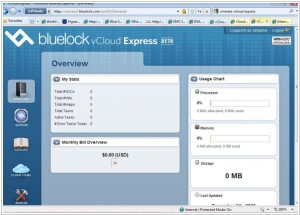CloudStack vs VMware vCloud
March 08, 2025 | Author: Michael Stromann
8★
Apache CloudStack is open source software designed to deploy and manage large networks of virtual machines, as a highly available, highly scalable Infrastructure as a Service (IaaS) cloud computing platform. CloudStack is used by a number of service providers to offer public cloud services, and by many companies to provide an on-premises (private) cloud offering, or as part of a hybrid cloud solution.
11★
Start moving toward secure cloud computing with VMware vCloud solutions and services. Leverage the power of cloud computing while retaining the flexibility and open standards to support your existing IT infrastructure. Enabling IT as a service through cloud computing gives you a more efficient, flexible and cost-effective model.
See also:
Top 10 Public Cloud Platforms
Top 10 Public Cloud Platforms
CloudStack and VMware vCloud are both terribly clever ways of making lots of virtual computers appear out of nowhere, a bit like a magician pulling rabbits out of a hat—except the rabbits are data centers and the magician charges a monthly subscription. They both allow people to create, manage and organize virtual machines, ensuring that everything runs smoothly while the actual physical servers sit somewhere humming happily. They come with self-service portals, because what’s the point of technology if people can’t pretend they know what they’re doing?
CloudStack, which has been around since 2008, is open-source, meaning it’s maintained by an army of developers who are either passionate or simply like arguing about code on the internet. Originally created by Cloud.com, it passed through Citrix's hands before ending up at the Apache Software Foundation, which, as we all know, collects wayward software projects like a Victorian orphanage. CloudStack is favored by telecom companies and service providers who enjoy scaling things to absurd sizes while ensuring their users never have to actually see the hardware behind the curtain.
VMware vCloud, on the other hand, is a more polished, proprietary beast, designed for enterprises that have already sold their souls to VMware’s ecosystem and are quite happy about it. Launched in 2010, it integrates seamlessly with VMware’s other expensive, wonderfully complicated products and ensures everything remains neatly virtualized with minimal existential crises. It is, of course, also American—because if there’s one thing the U.S. does well, it’s turning infrastructure into a service and selling it back to you at a premium.
See also: Top 10 Public Cloud Platforms
CloudStack, which has been around since 2008, is open-source, meaning it’s maintained by an army of developers who are either passionate or simply like arguing about code on the internet. Originally created by Cloud.com, it passed through Citrix's hands before ending up at the Apache Software Foundation, which, as we all know, collects wayward software projects like a Victorian orphanage. CloudStack is favored by telecom companies and service providers who enjoy scaling things to absurd sizes while ensuring their users never have to actually see the hardware behind the curtain.
VMware vCloud, on the other hand, is a more polished, proprietary beast, designed for enterprises that have already sold their souls to VMware’s ecosystem and are quite happy about it. Launched in 2010, it integrates seamlessly with VMware’s other expensive, wonderfully complicated products and ensures everything remains neatly virtualized with minimal existential crises. It is, of course, also American—because if there’s one thing the U.S. does well, it’s turning infrastructure into a service and selling it back to you at a premium.
See also: Top 10 Public Cloud Platforms





